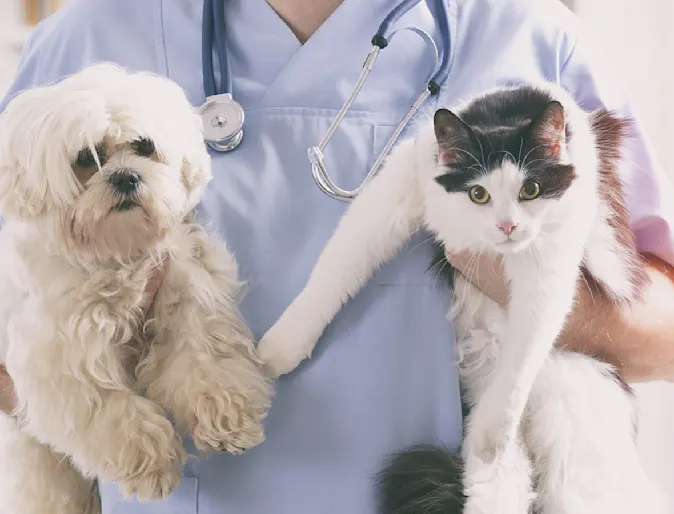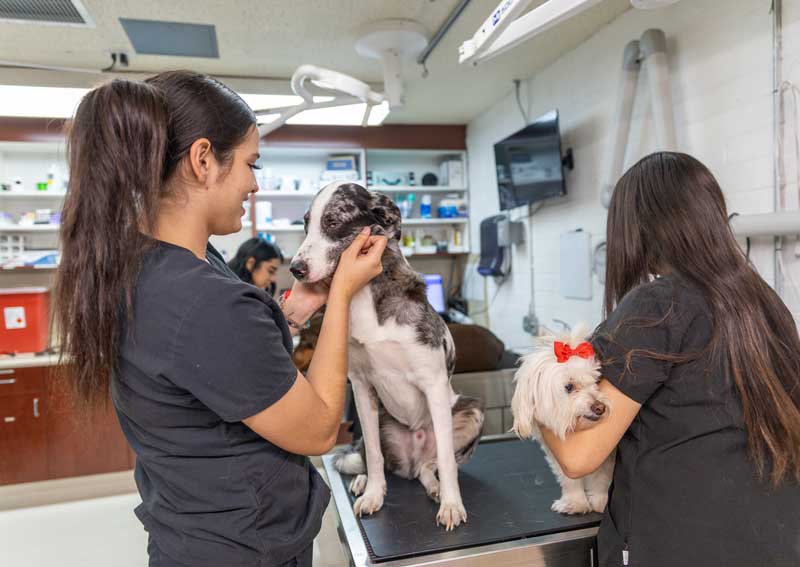Why It’s Critical to Locate an emergency vet near me in Advance
Why It’s Critical to Locate an emergency vet near me in Advance
Blog Article
All About Vet Surgery: Understanding the Value of Specialist Take Care Of Your Pet dogs
Vet surgical procedure is an essential component of pet dog medical care. It includes different procedures, from routine optional surgical procedures to urgent treatments. Recognizing the ins and outs of these surgeries can help pet proprietors make notified choices. The preparation, implementation, and recuperation phases are vital for ensuring the well-being of animals. With proper understanding, proprietors can browse the complexities of veterinary treatment. What variables should be considered prior to a family pet undergoes surgical procedure?
Sorts Of Vet Surgeries
When a family pet requires surgical intervention, comprehending the various types of veterinarian surgical treatments can help family pet proprietors make notified choices. Veterinary surgical procedures can be extensively classified into 3 primary types: elective, urgent, and emergency surgical treatments. Elective surgeries, such as spaying or neutering, are planned procedures that are not promptly deadly. Immediate surgical procedures, like those for international body elimination, need to be carried out soon but are not dangerous in the moment. Emergency situation surgical treatments, such as those resolving serious injury or interior blood loss, are crucial and call for instant attention.Additionally, surgical procedures can differ in complexity, varying from minimally invasive laparoscopic procedures to a lot more extensive open surgical procedures. Each kind of surgical procedure carries its own threats and recovery processes. Comprehending these groups permits family pet owners to participate in significant discussions with vets, leading to much better results for their beloved animals.
Getting ready for Your Animal's Surgical treatment
Preparing for an animal's surgery involves a thorough checklist to assure all basics are covered. Efficient interaction with the veterinarian is essential for comprehending the treatment and any kind of required pre-operative actions - veterinary cardiologist near me. In addition, having clear post-operative care directions will certainly help owners supply the finest support for their recovering animals
Pre-Surgery List Essentials
Ensuring a smooth medical experience for a pet dog requires careful preparation and focus to detail. A pre-surgery checklist is crucial for animal owners to comply with. Validating the arranged surgical treatment date and time is crucial. Owners should additionally confirm that their animal has actually fasted according to the veterinarian's instructions, generally for 8-12 hours before surgical treatment. Gathering required medical documents, consisting of vaccination background, is essential for the vet's evaluation. It is also advisable to prepare a comfy space in the house for the pet dog's healing after surgery. Proprietors must have a plan for transportation to and from the vet clinic, making sure that the pet is protected and comfortable throughout the journey. Following these actions can greatly improve the medical experience.
Connecting With Your Veterinarian

Effective communication with the vet is vital for a successful surgical experience for family pets. Proprietors ought to be prepared to review their pet dog's medical background, including any kind of pre-existing problems, medicines, and allergic reactions. This info helps the vet evaluate dangers and tailor the medical strategy accordingly. Furthermore, pet proprietors should ask inquiries regarding the procedure, anesthesia, and anticipated results to guarantee they fully understand the procedure. Making clear any type of questions can relieve stress and anxiety for both the animal and the owner. It is additionally crucial to communicate any kind of behavior modifications or concerns observed in the pet dog leading up to the surgery. Inevitably, clear discussion fosters trust fund and collaboration, making certain that family pets get the best feasible care throughout their surgical trip.
Post-Operative Treatment Instructions
After talking about the medical treatment with the vet, pet proprietors should concentrate on post-operative treatment directions to facilitate a smooth recovery for their family pets. These directions commonly consist of checking the surgical site for signs of infection, such as inflammation or discharge. Pet dogs may require to be kept one's cool and constrained to avoid excessive motion that might interfere with recovery. Pain management is crucial, so proprietors should comply with the vet's advice on carrying out medications. Additionally, dietary constraints may be encouraged to stay clear of gastrointestinal distress. Regular follow-up appointments are vital to assure proper healing and deal with any type of worries. By sticking to these post-operative treatment directions, pet proprietors can significantly add to their animal's recuperation and total well-being.
The Surgical Refine Explained
The surgery for family pets includes vital steps that guarantee their safety and recuperation. Pre-surgery prep work are vital for decreasing threats, while post-operative care standards play an essential function in advertising recovery. Comprehending these components helps family pet owners browse the surgical experience much more successfully.
Pre-Surgery Preparations
Prior to an animal goes through surgical treatment, numerous crucial prep work have to take location to ensure a secure and effective treatment. Initially, a comprehensive vet examination is necessary to examine the family pet's overall wellness and identify any type of potential dangers. This might include blood tests, imaging, or various other diagnostics. more info The veterinarian will certainly also go over anesthetic options customized to the pet dog's certain demands. In addition, animal owners are generally instructed to withhold food and water for a defined time before surgical procedure to reduce the threat of problems during anesthetic. It is necessary for proprietors to provide a total medical history, consisting of any medications or allergies, ensuring the medical group has all needed info. Correct interaction and adherence to pre-surgery guidelines can significantly improve the end result of the treatment.
Post-Operative Treatment Guidelines
Proper post-operative care is essential for ensuring a pet's healing following surgical treatment. After the treatment, pet dogs need to be kept track of carefully for any signs of problems, such as excessive bleeding, swelling, or unusual actions. It is very important to adhere to the veterinarian's directions regarding medicines, including painkiller and prescription antibiotics. Pets should be maintained in a quiet, comfortable environment to decrease stress and anxiety and advertise recovery. Restricting task is vital; short, leashed strolls might be necessary, yet leaping or running must be avoided. Routine follow-up visits must be set up to analyze the recovery process. In addition, the medical website must be kept clean and dry, with any type of indications of infection reported to a vet promptly. Abiding by these guidelines enhances recuperation end results.
Anesthetic and Pain Monitoring
Efficient anesthetic and discomfort administration are vital components of veterinary surgical treatment, making sure that pet dogs stay comfy and risk-free throughout the procedure. Veterinarians evaluate each animal's specific demands, thinking about elements such as age, weight, health and wellness status, and the sort of surgery being performed.Anesthesia procedures generally include a combination of pre-anesthetic drugs, induction representatives, and inhalant anesthetics, enabling specific control over the pet's degree of awareness. Tracking during surgical procedure is vital; vets continuously observe important indicators to deal with any type of potential difficulties promptly.Pain administration strategies may include opioids, non-steroidal anti-inflammatory drugs (NSAIDs), and anesthetics, tailored to the pet dog's specific scenario. This diverse strategy assists reduce discomfort and promotes a smoother surgical experience. By prioritizing effective anesthetic and pain management, vet experts boost the general welfare of pet dogs going through operations, guaranteeing they obtain the highest standard of treatment.
Post-Operative Treatment and Recuperation
Complying with surgical procedure, the emphasis moves to post-operative care and healing, which is important for ensuring an animal's risk-free go back to normal activities. Throughout this duration, family pets call for a peaceful, comfortable environment to aid recovery. Owners should very closely check their animals for any indications of pain or uncommon behavior.Veterinary guidelines frequently consist of certain directions associated with drug management, wound care, and dietary modifications. It is important to stick to these recommendations to lessen issues and promote healing. Pets may need to be limited from energetic tasks, such as running or jumping, throughout their recuperation period (tplo surgery).Regular follow-up visits with the veterinarian allow for surveillance of the pet dog's development and timely adjustments to the care plan. Giving psychological support and friendship can additionally improve a pet dog's recovery experience, assisting to reduce anxiety and stress and anxiety. Generally, diligent post-operative care plays a substantial function in achieving a successful recovery
Acknowledging Difficulties After Surgical Procedure
Just how can family pet proprietors determine difficulties after surgical treatment? Awareness of details indicators is necessary for guaranteeing the wellness of pets throughout recovery. Common signs consist of excessive swelling, inflammation, or discharge at the medical site, which may indicate infection. In addition, persistent discomfort, suggested by grumbling or unwillingness to move, must prompt instant focus. Adjustments in appetite or water consumption can additionally indicate issues; a decline in these behaviors may indicate discomfort or distress.Moreover, family pet owners should monitor their pets for any kind of unusual habits, such as lethargy or trouble breathing, as these can be indicators of serious concerns. Vomiting or diarrhea adhering to surgical procedure may require immediate vet analysis. Recognizing these problems early can considerably impact a pet dog's healing procedure, emphasizing the relevance of watchfulness and punctual communication with a veterinarian for any concerning symptoms.
The Role of Vet Specialists in Surgical Treatment
Vet specialists play an essential function in making sure the security and success of surgeries for pets, particularly adhering to surgical treatment when checking and care are paramount. These experts include vets, veterinary service technicians, and assistance personnel, all of whom add specialized abilities to the medical process.Before surgical treatment, veterinarians perform thorough analyses to evaluate the pet's health and wellness, making certain that any type of underlying conditions are managed. Throughout the procedure, the surgical group offers anesthesia, maintains sterilized environments, and keeps an eye on crucial indicators, all crucial for reducing risks.Post-operative treatment is similarly substantial; veterinary professionals observe for problems, handle discomfort, and overview owners on recovery practices. Their experience enables them to identify very early indications of distress or infection, making sure prompt treatment. Inevitably, the collaborative efforts of veterinary experts in medical care promote a secure setting, promoting the well-being of pet dogs throughout the surgical trip.

Frequently Asked Questions
How Do I Pick the Right Veterinary Surgeon for My Pet dog?
Picking the ideal veterinary cosmetic surgeon involves investigating credentials, reviewing testimonials, and reviewing the facility's setting. It is necessary to assess the specialist's experience with certain treatments and their communication design when choosing.
What Are Common Misconceptions Concerning Vet Surgeries?
Typical misconceptions concerning vet surgeries consist of beliefs that they are always high-risk, unnecessary, or for emergency situations. Several family pet proprietors underestimate the advantages of preventive procedures and the skill associated with veterinary medical treatment.
Just How Much Will My Animal's Surgical treatment Expense?
The cost of a family pet's surgical treatment can differ significantly based upon factors such as the sort of procedure, the vet's experience, and geographic area (tplo surgery for dogs). Commonly, costs vary from a few hundred to a number of thousand bucks

Can My Family Pet Eat Before Surgical Procedure?
Prior to surgery, it is usually recommended that pets avoid eating for a details period. This fasting assists reduce the danger of difficulties during anesthesia. Owners need to consult their vet for specific directions tailored to their pet's demands.
What if My Animal Has Pre-Existing Health Conditions?
When a family pet has pre-existing wellness conditions, it's important for the vet to examine these factors prior to surgical treatment. This evaluation assurances proper safety measures are taken, decreasing dangers and maximizing the pet's total security throughout the procedure.
Report this page